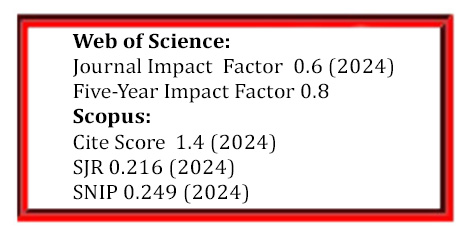Energy Absorption and Damage Analysis of Glass Fibre Reinforced Polymer Spherical Core Sandwich Structures
DOI:
https://doi.org/10.5755/j02.ms.38052Keywords:
GFRP, sandwich structures, impact test, spherical, composite materialsAbstract
The present study describes the energy absorption and damage analysis of the spherical core sandwich structures (SCSS) fabricated using woven Glass Fibre Reinforced Plastic (GFRP) by hand- layup method. Based on the core orientation, the spherical cores are categorized as stagger (S), regular (R), inverted (I), and interlock (L). The pitch distance and diameter of the models considered for the study are 24 mm and 16 mm, respectively. The specimens are subjected to a low velocity impact test (LVIT) at three different energy levels 9.9, 27.5, and 53.9 J respectively. Evaluations are carried out on the different kind of parameters namely coefficient of restitution (COR),energy absorption ratio, and energy loss percentage maximum displacement, maximum force, absorbed energy, and rebound energy. Among the models at every impact velocity it is found that the model R sustains a maximum force of 3078 N at 7 m/s impact velocity. The stagger model has recorded a maximum displacement of 34.4 mm among all velocities, whereas the regular model reveals a minimum displacement of 4.9 mm based on the analysis of maximum displacement. Similarly, the regular model has a maximum energy absorption ratio at 5 and 7 m/s respectively, whereas at 3 m/s the interlock model absorbs more energy. The failure pattern of the specimens is analyzed through visual inspection and ultrasound testing. Matrix cracking and fibre breakage are the typical failures seen in the model at 3 m/s, while core crushing and perforation are seen at 5 and 7 m/s impact velocities. The damage area is minimum for the interlock model whereas it is maximum for the stagger model.
Downloads
Published
Issue
Section
License
The copyrights for articles in this journal are retained by the author(s), with first publication rights granted to the journal. By virtue of their appearance in this open-access journal, articles are free to use with proper attribution in educational and other non-commercial settings.



